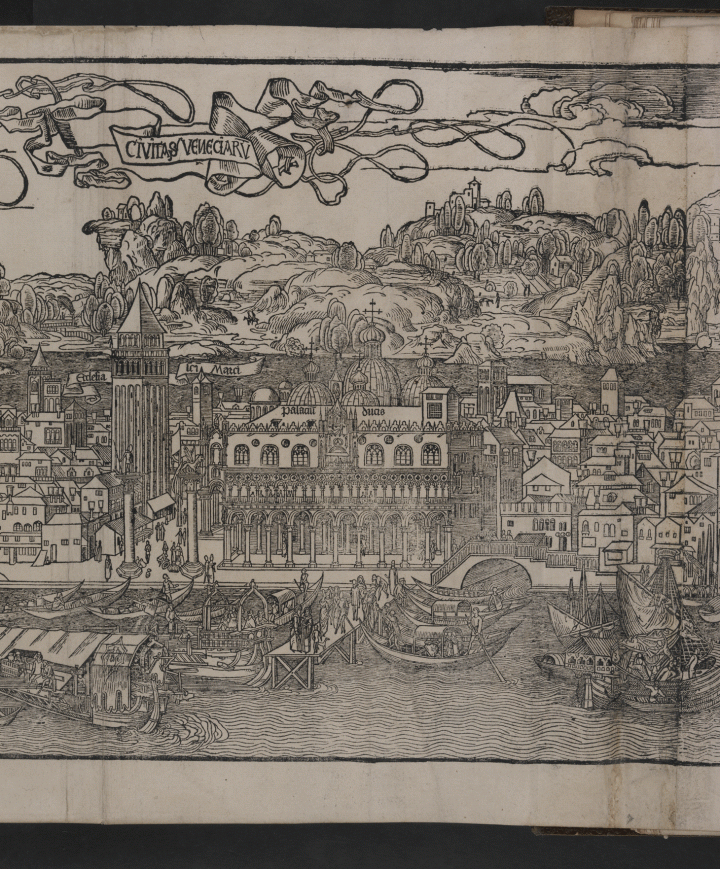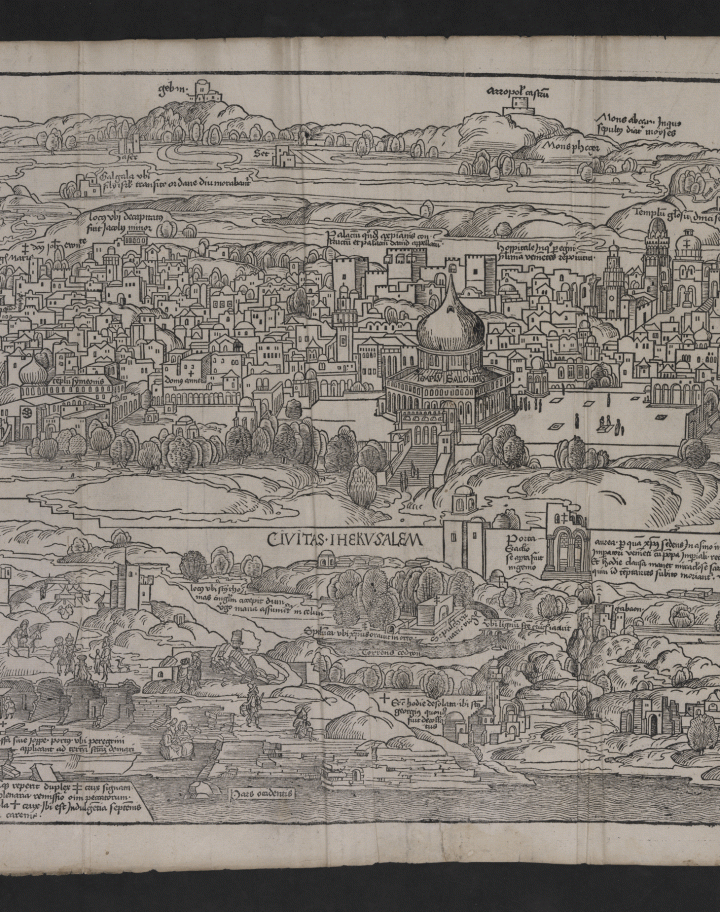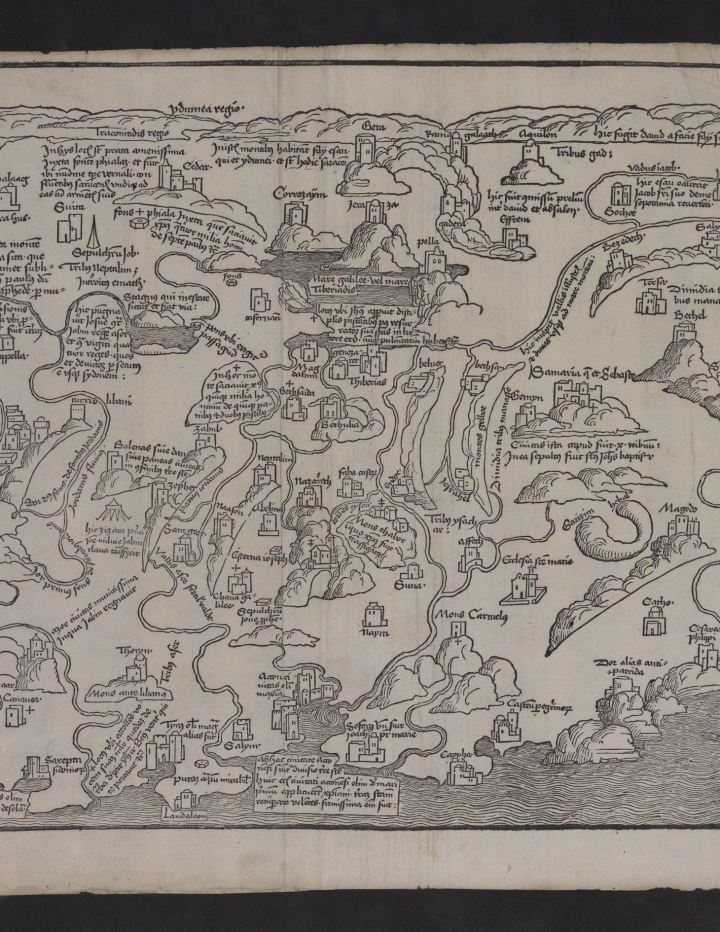This fall The British Museum has on display a 15th-century book Peregrinatio in Terram Sanctam, featuring the first accurate printed illustrations of Jerusalem and Venice. A part of the exhibition, "Inspired by the east: how the Islamic world influenced western art," this fold out travel guide was the Lonely Planet of its time.

Inspired by the 1483-1484 travels of Bernhard von Breydenbach and Dutch artist Erhard Reuwich the guide was published in Germany in 1486, right after the printing press was invented. The book depicts Crete and Rhodes and sacred cities like Venice and Palestine from 1483-1484.
For many in Europe the first glimpses of places they only heard about allowed a sense of understanding, wonder, and a sense of confirmation. Seen through the eyes of the two explorers, the drawings depict architectural details, as well as general activities of the people they saw.

The book was widely published and reprinted. Part advertisement, part guide, part illustration. These maps reflect our visual conquest of place, our capturing of a people, and our need to tell the story of what we saw and what it looked like. Think Instagram of the 15th century and von Breydenbach as our first influencer.
I don't imagine this is first time that travelers depicted what they had seen. There is an need to document our travels and explain to ourselves and others what is new or exotic. By writing about or drawing these exploits, we take a little bit of it home with us, its story neatly packaged in a book, a map, an online gallery.
Romanticism of place, simplification of history, nostalgia for the past, festishization of culture. These maps and guides created a new landscape of imagination that altered the understanding and reality of the world.
What is missing from these maps? What is untrue? What is true?
"The Tourism 2020 Vision forecasts show that international tourist arrivals are expected to reach over 1.56 billion by the year 2020. This demonstrates an annual growth rate of 4.1 per cent over the period 1995-2020. Long-haul travel worldwide will grow faster than intraregional travel"
We haven't stopped exploring, site-seeing, navigating, experiencing. Tourism, fed by the images and stories of digital media, has increased as such a rate that some places have actually stopped advertising and trying to limit people from visiting.
What would be the anti-map? What would be the 'un-guide' to a place?



Comments